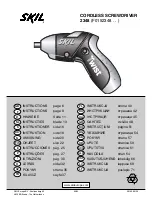
AMT/PTD/PBX/0020/2/4/EN
01/2007
Page 61
3.3
Method of determining the number of base stations
according to predicted traffic
This method allows you to determine the number of base stations required to provide service in a
coverage area.
Proceed as follows:
1
Identify the traffic areas and divide them into two categories:
•
Homogeneous traffic areas
A homogeneous traffic area consists of radio areas located within the same geographic
sector that generate the same level of traffic (building or floor where users generate a
generally constant level of traffic, without leaving this sector).
•
Special traffic areas
A special traffic area consists of radio areas located within a given sector, where the traffic
level varies from one radio area to the next (meeting room, cafeteria).
2
For each homogeneous and special radio area, the following parameters must be obtained
from the customer:
•
N: total number of mobile DECT users.
•
Z: number of radio areas in the traffic area.
•
m : the mobility of users within a given traffic area.
Mobility is defined for each user based on information provided by the customer during the
interview. Mobility, "m", may have the following values:
•
low: mobiles tend to stay within their reference areas.
•
medium: intermediate.
•
high: mobiles often stay outside their reference areas.
• e: traffic in Erlangs per mobile.
• low = 0.04 medium = 0.12 high = 0.2
If the customer does not know the exact user traffic in minutes per hour, the table below,
giving typical traffic levels for various business functions, may be used as a guide to
estimate the average traffic.
Table2: Determining the average traffic of the various types of activity
The traffic level given is busy hour traffic.
Traffic per mobile
Business function
Low ( < 5 min./h)
hotel
school
Average (from 5 to 10 min./h)
work yard
retail store
plant
advertising agency
High (from 10 to 20 min./h)
hospital centre; locations close to operating
theaters
law firm
real estate agency
stock broker
garage, workshop reception (20/25 min./h)
Summary of Contents for NeXspan 50
Page 2: ...Page 2 01 2007 AMT PTD PBX 0020 2 4 EN ...
Page 20: ...Page 20 01 2007 AMT PTD PBX 0020 2 4 EN ...
Page 66: ...Page 66 01 2007 AMT PTD PBX 0020 2 4 EN ...
Page 70: ...Page 70 01 2007 AMT PTD PBX 0020 2 4 EN Figure 4 2 Bottom view of the LD4 ST card ...
Page 134: ...Page 134 01 2007 AMT PTD PBX 0020 2 4 EN ...
















































